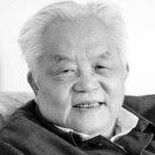Wen Long Wu
age ~40
from San Leandro, CA
- Also known as:
-
- Wen L Wu
- Wenlong Wu
- Long Wu Wenlong
- Long Wu Wen
Wen Wu Phones & Addresses
- San Leandro, CA
- Tracy, CA
- 3169 Davis St, Oakland, CA 94601
Isbn (Books And Publications)

Medicine Doctors

Dr. Wen Wu, Foster City CA - DDS (Doctor of Dental Surgery)
view sourceSpecialties:
Dentistry
Address:
1289 E Hillsdale Blvd Suite 9, Foster City, CA 94404
(650)6389688 (Phone), (650)6389689 (Fax)
(650)6389688 (Phone), (650)6389689 (Fax)
Languages:
English
Resumes

Wen Yi Wu
view source
Wen Hua Wu
view source
Wen Hsin Wu
view source
Wen Wu
view source
Wen Wu
view source
Wen Wu
view source
Wen Wu
view source
Clerk At Bnp Paribas
view sourcePosition:
clerk at BNP Paribas
Location:
United States
Industry:
Banking
Work:
BNP Paribas
clerk
clerk
Us Patents
-
Multistep Method Of Depositing Metal Seed Layers
view source -
US Patent:7682966, Mar 23, 2010
-
Filed:Feb 1, 2007
-
Appl. No.:11/701984
-
Inventors:Robert Rozbicki - San Francisco CA, US
Bart van Schravendijk - Sunnyvale CA, US
Tom Mountsier - San Jose CA, US
Wen Wu - San Jose CA, US -
Assignee:Novellus Systems, Inc. - San Jose CA
-
International Classification:H01L 23/535
-
US Classification:438637, 438675, 438687, 257E21169, 257E21175
-
Abstract:Metal seed layers are deposited on a semiconductor substrate having recessed features by a method that involves at least three operations. In this method, a first layer of metal is deposited onto the substrate to cover at least the bottom portions of the recessed features. The first layer of metal is subsequently redistributed to improve sidewall coverage of the recessed features. Next, a second layer of metal is deposited on at least the field region of the substrate and on the bottom portions of the recessed features. The method can be implemented using a PVD apparatus that allows deposition and resputtering operations. This sequence of operations can afford seed layers with improved step coverage. It also leads to decreased formation of voids in interconnects, and to improved resistance characteristics of formed IC devices.
-
Compositionally Graded Titanium Nitride Film For Diffusion Barrier Applications
view source -
US Patent:7727882, Jun 1, 2010
-
Filed:Dec 17, 2007
-
Appl. No.:12/002780
-
Inventors:Wen Wu - Milpitas CA, US
Chentao Yu - Sunnyvale CA, US
Girish Dixit - San Jose CA, US
Kenneth Jow - San Jose CA, US -
Assignee:Novellus Systems, Inc. - San Jose CA
-
International Classification:H01L 21/4763
-
US Classification:438627, 438625, 438643, 438656, 438675, 438685, 257E21584
-
Abstract:A diffusion barrier film includes a layer of compositionally graded titanium nitride, having a nitrogen-rich portion and a nitrogen-poor portion. The nitrogen-rich portion has a composition of at least about 40% (atomic) N, and resides closer to the dielectric than the nitrogen-poor portion. The nitrogen-poor portion has a composition of less than about 30% (atomic) N (e. g. , between about 5-30% N) and resides in contact with the metal, e. g. , copper. The diffusion barrier film can also include a layer of titanium residing between the layer of dielectric and the layer of compositionally graded titanium nitride. The layer of titanium is often partially or completely converted to titanium oxide upon contact with a dielectric layer. The barrier film having a compositionally graded titanium nitride layer provides excellent diffusion barrier properties, exhibits good adhesion to copper, and reduces uncontrolled diffusion of titanium into interconnects.
-
Deposition Of Doped Copper Seed Layers Having Improved Reliability
view source -
US Patent:8017523, Sep 13, 2011
-
Filed:May 16, 2008
-
Appl. No.:12/122118
-
Inventors:Hui-Jung Wu - Fremont CA, US
Daniel R. Juliano - Santa Clara CA, US
Wen Wu - San Jose CA, US
Girish Dixit - San Jose CA, US -
Assignee:Novellus Systems, Inc. - San Jose CA
-
International Classification:H01L 21/4763
-
US Classification:438687, 438627, 438675, 438678
-
Abstract:Improved methods of depositing copper seed layers in copper interconnect structure fabrication processes are provided. Also provided are the resulting structures, which have improved electromigration performance and reduced line resistance. According to various embodiments, the methods involve depositing a copper seed bilayer on a barrier layer in a recessed feature on a partially fabricated semiconductor substrate. The bilayer has a copper alloy seed layer and a pure copper seed layer, with the pure copper seed layer is deposited on the copper alloy seed layer. The copper seed bilayers have reduced line resistance increase and better electromigration performance than conventional doped copper seed layers. Precise line resistance control is achieved by tuning the bilayer thickness to meet the desired electromigration performance.
-
Resistive Switching Memory Element Including Doped Silicon Electrode
view source -
US Patent:8183553, May 22, 2012
-
Filed:Oct 29, 2009
-
Appl. No.:12/608934
-
Inventors:Prashant Phatak - San Jose CA, US
Tony Chiang - Campbell CA, US
Michael Miller - San Jose CA, US
Wen Wu - Pleasanton CA, US -
Assignee:Intermolecular, Inc. - San Jose CA
-
International Classification:H01L 47/00
-
US Classification:257 4, 257E45003, 365148
-
Abstract:A resistive switching memory element including a doped silicon electrode is described, including a first electrode comprising doped silicon having a first work function, a second electrode having a second work function that is different from the first work function by between 0. 1 and 1. 0 electron volts (eV), a metal oxide layer between the first electrode and the second electrode, the metal oxide layer switches using bulk-mediated switching and has a bandgap of greater than 4 eV, and the memory element switches from a low resistance state to a high resistance state and vice versa.
-
Nonvolatile Memory Element Including Resistive Switching Metal Oxide Layers
view source -
US Patent:8294219, Oct 23, 2012
-
Filed:Jul 24, 2008
-
Appl. No.:12/179538
-
Inventors:Sandra G. Malhotra - San Jose CA, US
Pragati Kumar - Santa Clara CA, US
Sean Barstow - San Jose CA, US
Tony Chiang - Campbell CA, US
Prashant B. Phatak - San Jose CA, US
Wen Wu - Pleasanton CA, US
Sunil Shanker - Santa Clara CA, US -
Assignee:Intermolecular, Inc. - San Jose CA
-
International Classification:H01L 21/02
-
US Classification:257382, 257 68, 257296, 257 71, 257309, 257905, 257908, 257E27084, 257E27075, 257E27097, 257758, 257308
-
Abstract:Nonvolatile memory elements that are based on resistive switching memory element layers are provided. A nonvolatile memory element may have a resistive switching metal oxide layer. The resistive switching metal oxide layer may have one or more layers of oxide. A resistive switching metal oxide may be doped with a dopant that increases its melting temperature and enhances its thermal stability. Layers may be formed to enhance the thermal stability of the nonvolatile memory element. An electrode for a nonvolatile memory element may contain a conductive layer and a buffer layer.
-
Charge Blocking Layers For Nonvolatile Memories
view source -
US Patent:8298890, Oct 30, 2012
-
Filed:Sep 3, 2009
-
Appl. No.:12/553918
-
Inventors:Ronald John Kuse - Dublin CA, US
Monica Sawkar Mathur - San Jose CA, US
Wen Wu - Pleasanton CA, US -
Assignee:Intermolecular, Inc. - San Jose CA
-
International Classification:H01L 21/336
-
US Classification:438257, 438211, 438593, 438972, 257239, 257261, 257298, 257E21179, 257E21495
-
Abstract:A semiconductor memory element is described, including a substrate including a source region, a drain region, and a channel region, a tunnel oxide over the channel region of the substrate, a charge storage layer over the tunnel oxide, a charge blocking layer over the charge storage layer, and a control gate over the charge blocking layer. The charge blocking layer further includes a first layer including a transition metal oxide, a second layer including a metal silicate, a third layer including the transition metal oxide of the first layer.
-
Multistep Method Of Depositing Metal Seed Layers
view source -
US Patent:8298936, Oct 30, 2012
-
Filed:Feb 3, 2010
-
Appl. No.:12/699738
-
Inventors:Robert Rozbicki - San Francisco CA, US
Bart van Schravendijk - Sunnyvale CA, US
Thomas Mountsier - San Jose CA, US
Wen Wu - Milpitas CA, US -
Assignee:Novellus Systems, Inc. - San Jose CA
-
International Classification:H01L 21/283
H01L 21/67 -
US Classification:438637, 438675, 438687, 257E21169, 257E21175
-
Abstract:Metal seed layers are deposited on a semiconductor substrate having recessed features by a method that involves at least three operations. In this method, a first layer of metal is deposited onto the substrate to cover at least the bottom portions of the recessed features. The first layer of metal is subsequently redistributed to improve sidewall coverage of the recessed features. Next, a second layer of metal is deposited on at least the field region of the substrate and on the bottom portions of the recessed features. The method can be implemented using a PVD apparatus that allows deposition and resputtering operations. This sequence of operations can afford seed layers with improved step coverage. It also leads to decreased formation of voids in interconnects, and to improved resistance characteristics of formed IC devices.
-
Nonvolatile Memory Elements
view source -
US Patent:8318573, Nov 27, 2012
-
Filed:Dec 27, 2011
-
Appl. No.:13/337611
-
Inventors:Sandra G. Malhotra - San Jose CA, US
Pragati Kumar - Santa Clara CA, US
Sean Barstow - San Jose CA, US
Tony Chiang - Campbell CA, US
Prashant B. Phatak - San Jose CA, US
Wen Wu - Pleasanton CA, US
Sunil Shanker - Santa Clara CA, US -
Assignee:Intermolecular, Inc. - San Jose CA
-
International Classification:H01L 21/02
-
US Classification:438382, 257E21004, 257E27084, 257E27075, 257E27097, 257 68, 257296
-
Abstract:Nonvolatile memory elements that are based on resistive switching memory element layers are provided. A nonvolatile memory element may have a resistive switching metal oxide layer. The resistive switching metal oxide layer may have one or more layers of oxide. A resistive switching metal oxide may be doped with a dopant that increases its melting temperature and enhances its thermal stability. Layers may be formed to enhance the thermal stability of the nonvolatile memory element. An electrode for a nonvolatile memory element may contain a conductive layer and a buffer layer.
Vehicle Records
-
Wen Wu
view source -
Address:3169 Davis St, Oakland, CA 94601
-
VIN:1HGCM72617A003944
-
Make:HONDA
-
Model:ACCORD
-
Year:2007
Lawyers & Attorneys

Wen Wu - Lawyer
view sourceOffice:
McGraw Hill Financial, Inc.
Specialties:
Securitization
Structured Finance
Structured Finance
ISLN:
917605114
Admitted:
2004
University:
Beijing Foreign Studies University, Beijing, China, B.A., 1997; Northwestern University, M.A., 1999
Law School:
Columbia University, J.D., 2003
Name / Title
Company / Classification
Phones & Addresses
Owner
Wen Wu, DDS- Family Dental
Dentists
Dentists
1289 E. Hillsdale Blvd, Suite 9, Foster City, CA 94404-1294
(650)6389688, (650)6389689
(650)6389688, (650)6389689
President
BV&H INTERNATIONAL CORP
Whol Men's/Boy's Clothing
Whol Men's/Boy's Clothing
14854 Donna St, San Leandro, CA 94578
(510)3510318
(510)3510318
Owner
Wen Wu, DDS- Family Dental
Dentists
Dentists
1289 E Hillsdale Blvd SUITE 9, San Mateo, CA 94404
(650)6389688, (650)6389689
(650)6389688, (650)6389689
President
QUALIDENT, INC
1289 E Hillsdale Blvd STE 9, San Mateo, CA 94404
Principal
Wu, Wen
Dentist's Office
Dentist's Office
22 Prt Royal Ave, San Mateo, CA 94404
Principal
Tba of America
Religious Organization
Religious Organization
1822 Eddy St, San Francisco, CA 94115
(415)6741532
(415)6741532
1299 Water Lily LLC
Real Estate Services
Real Estate Services
1698 S Wolfe Rd, Sunnyvale, CA 94087
1289 E Hillsdale Blvd, San Mateo, CA 94404
1289 E Hillsdale Blvd, San Mateo, CA 94404
Kings United Group, LC
Scientific Research and Trading
Scientific Research and Trading
833 Washington St, San Francisco, CA 94108
1566 Deluca Dr, San Jose, CA 95131
1566 Deluca Dr, San Jose, CA 95131
Plaxo

Wen Wu
view sourceLaurentian University

Wen Tsun Wu
view source
Wen Wu
view source
Wen Wu
view source
Wen Quian Wu
view source
Wen Qing Wu
view source
Wen Zhong Wu
view source
Wen Shin Wu
view source
Guan Wen Wu
view sourceYoutube
Classmates
Myspace
Flickr
Googleplus

Wen Wu
Education:
Peking University - Economics, Peking University - EECS
Tagline:
Me is me, mine is mine!

Wen Wu

Wen Wu
Bragging Rights:
台灣靜心發展協會理事長

Wen Wu
Education:
University of Exeter - Finance and management

Wen Wu

Wen Wu

Wen Wu

Wen Wu
Get Report for Wen Long Wu from San Leandro, CA, age ~40















